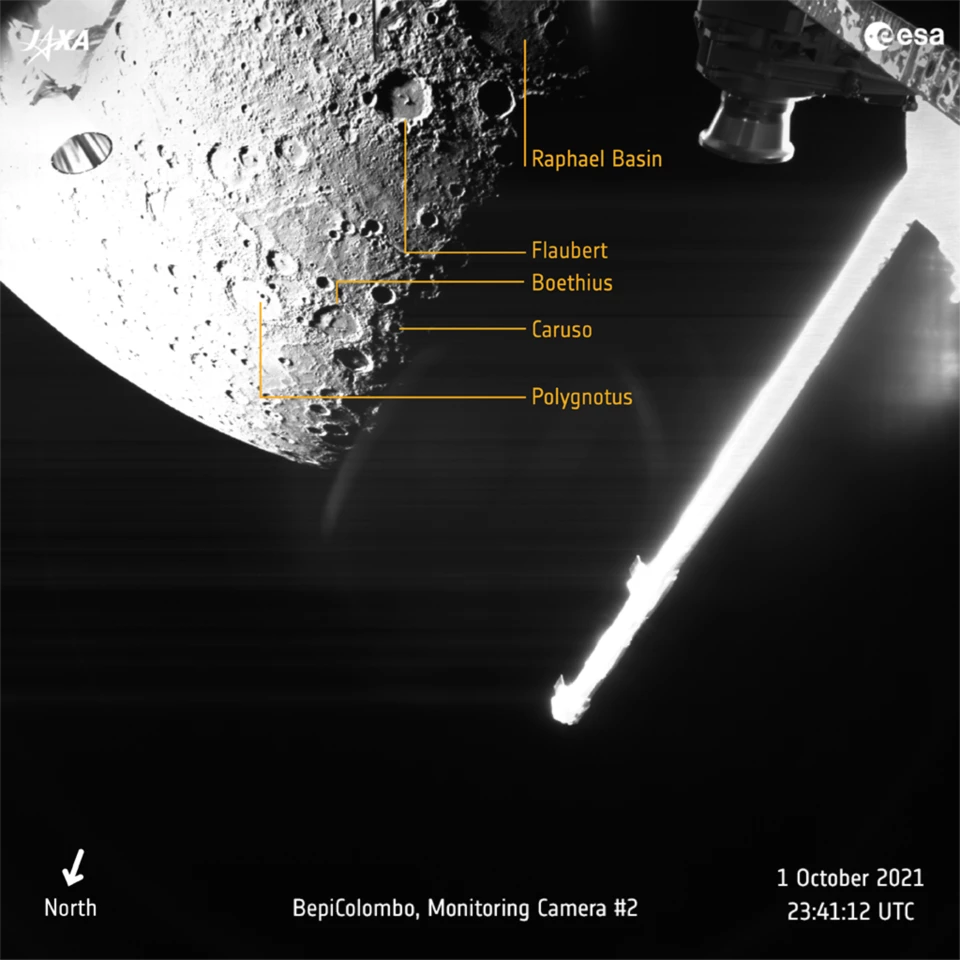Nearly three years after lifting off from French Guiana, the BepiColombo space probe has now set its sights on Mercury for the first time, completing a "flawless" flyby over the weekend. The maneuver resulted in the probe's first images of its target planet, and is the first of six close encounters the spacecraft will perform in the coming years.
BepiColombo is the European Space Agency's first mission to Mercury and is being undertaken together with the Japanese Space Agency (JAXA). Once it arrives at its destination in 2025, it will split into two separate orbiters that will circle Mercury in tandem and investigate its structure, magnetic field and almost non-existent atmosphere.
But to reach the orbit of Mercury, BepiColombo needs to perform a series of slingshot maneuvers, which began with a flyby of Earth in April last year, and two flybys of Venus since. The flyby of Mercury that took place on October 1 was the first of six it will complete over the next few years, which will steer the spacecraft into the planet's orbit in December of 2025.
“The flyby was flawless from the spacecraft point of view, and it’s incredible to finally see our target planet,” says Elsa Montagnon, Spacecraft Operations Manager for the mission.

The close approach brought the spacecraft to within 199 km (123 miles) of the planet's surface, with the onboard cameras and instruments collecting images and data during the encounter. Because it skimmed past the planet's nightside with less than optimal light, however, the closest images were actually snapped from a distance of around 1,000 km.
They still show a high level of detail that reveals large impact craters on the planet's surface, appearing much like our own Moon. When the orbiters begin their investigations later this decade, they will properly map the surface of the planet and analyze its composition to better understand how it formed.

“It was very exciting to see BepiColombo’s first images of Mercury, and to work out what we were seeing,” says David Rothery of the UK’s Open University who leads ESA’s Mercury Surface and Composition Working Group. “It has made me even more enthusiastic to study the top quality science data that we should get when we are in orbit around Mercury, because this is a planet that we really do not yet fully understand.”
BepiColombo's next flyby of Mercury is set for June 23, 2022, while its main science mission will begin in early 2026.
Source: ESA








